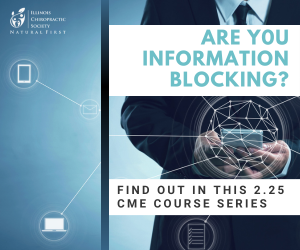
Required Steps for Cures Act Request
In this week’s video, we’ll dive into the consequences of using non-certified EHR and billing systems and the legally required steps you must take when patients and others make electronic record requests. Watch the video to learn more!
The Steps:
Once a provider receives a request from a patient, you must determine if you can provide the information in the way (manner) requested. For example, the patient might ask you to send her records to her health records app she keeps on her mobile phone. If, as a provider, you are technically unable to provide the information in that way, then you must take the following steps without discriminating against the requestor or patient (only moving to the next step IF you cannot meet the current step):
- Negotiate with the requester to find an agreeable format.
- If no agreement – *Provide the information in a format available from certified software meeting ONC 2015 Standards (as of April 5, 2021) as requested by the requester.
- If you cannot technically provide as in #2 –
- Provide the information via “content and transport standards specified by the requestor and published by the Federal Government.”[6]
- If you cannot technically provide as in #3 –
- Provide the information via ANSI standards as specified by the requestor. If you cannot technically provide as in #4 –
- “Using an alternative machine-readable format, including the means to interpret the EHI, agreed upon with the requestor.”[7] This would typically be an XML file that looks similar to Figure 1. If after the negotiation and walking through each of these steps on a case-by-case basis the provider is unable to provide the data, then the provider can exercise the Infeasibility Under the Circumstances Exception. However, the provider must first walk through each of the steps above (including negotiation), document the results of each step, and then provide a written response to the requestor within 10 business days of receipt of the request with the reason(s) why the request is infeasible.
Additional Information on the Cures Act:
Avoiding Information Blocking: A How-To Guide To Sharing Health Information Properly
The Cures Act – ICS Articles and videos
Transcription:
Last week, we briefly discussed the new data set that is required when a patient makes an electronic health information request. Now, it’s not just your notes, but it’s your notes. It’s your data set. It’s appointments that are kept electronically and billing that is done electronically. All of that information that it’s held electronically now is included in the data set that you would have to provide if a patient requests. We discussed that last week.
This week, I want to talk to you about this concept of well since I can’t do it, or I don’t have a certified system, then I just really don’t have to do anything that actually couldn’t be further from the truth. Next week, we’re going to talk about next week, we’re going to talk about the specifics related to a policy that you must have done in your practice, you must have it done. But this week, I want to talk to you about the steps that happen when a patient were to make a large request for medical records. So if they say I want all of my electronic health records (EHR), under the Cures Act, give me everything. In essence, now you’d sit back and say, Well, I just tell him, I can’t do it, actually, you can’t, you actually have to go through very specific steps with that patient.
First, you got to make sure that you negotiate with the patient to find an agreeable format, right, if you can’t come to an agreement in that format, maybe they want it in a specific format that is required by their patient portal, that they want to manage all of their documents in, which by the way is growing, and is increasingly going to add the capability for them to be able to make these requests, where the system handles it for them. And the patient just has to click a button. So one, you have to negotiate with a requester. If you can’t come to an agreement, then you have to provide the information available from certified software. Well, if you’re not using certified software, then, of course, that isn’t going to work. So then you have to go, if you can’t technically provide it, then you go to the next one. And you have to look at and say I got to provide the information via content and transport standards specified by the requester. and published by the federal government. It’s pretty complicated, right? But you have to go through this step, each step with the requester. The next is then you have to provide it in ANSI standards format, as required by the requester, or the patient in this case.
And last you have to use an alternative machine-readable format, including the means to interpret the electronic health information agreed upon with the requester. This is typically going to be done in an XML format, which not most systems don’t have the capability to be able to export that full data set that we talked about last week, you don’t have the capability to do that at this time. So please don’t be lulled into the concept that you don’t have to have a certified system. Now. You don’t it’s not required by law. But just know that you do have to go through the steps of negotiating each one of these and only after you’ve gone through all of these steps and you can’t come to an agreement with the requester or the patient in this case you can exercise infeasibility. But if you’re exercising and infeasibility you must have a written policy and you still have to go through the steps. We’ll catch you next week.
















